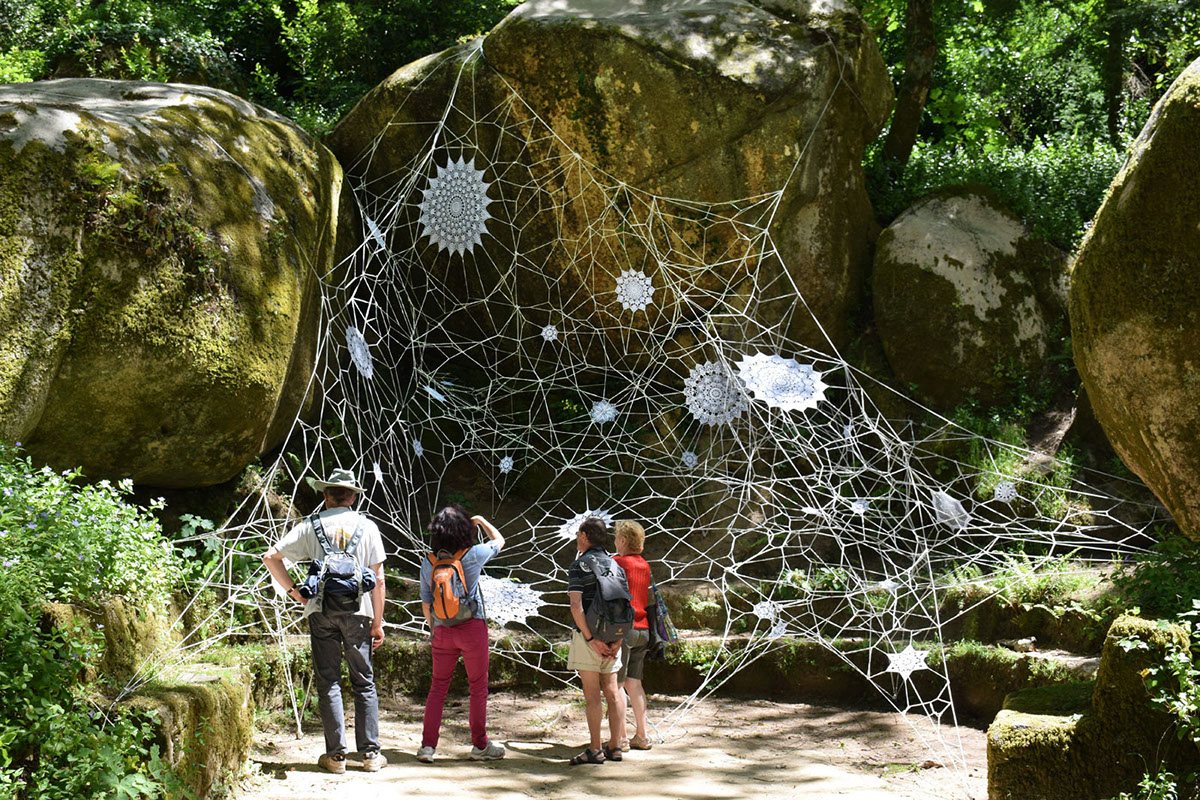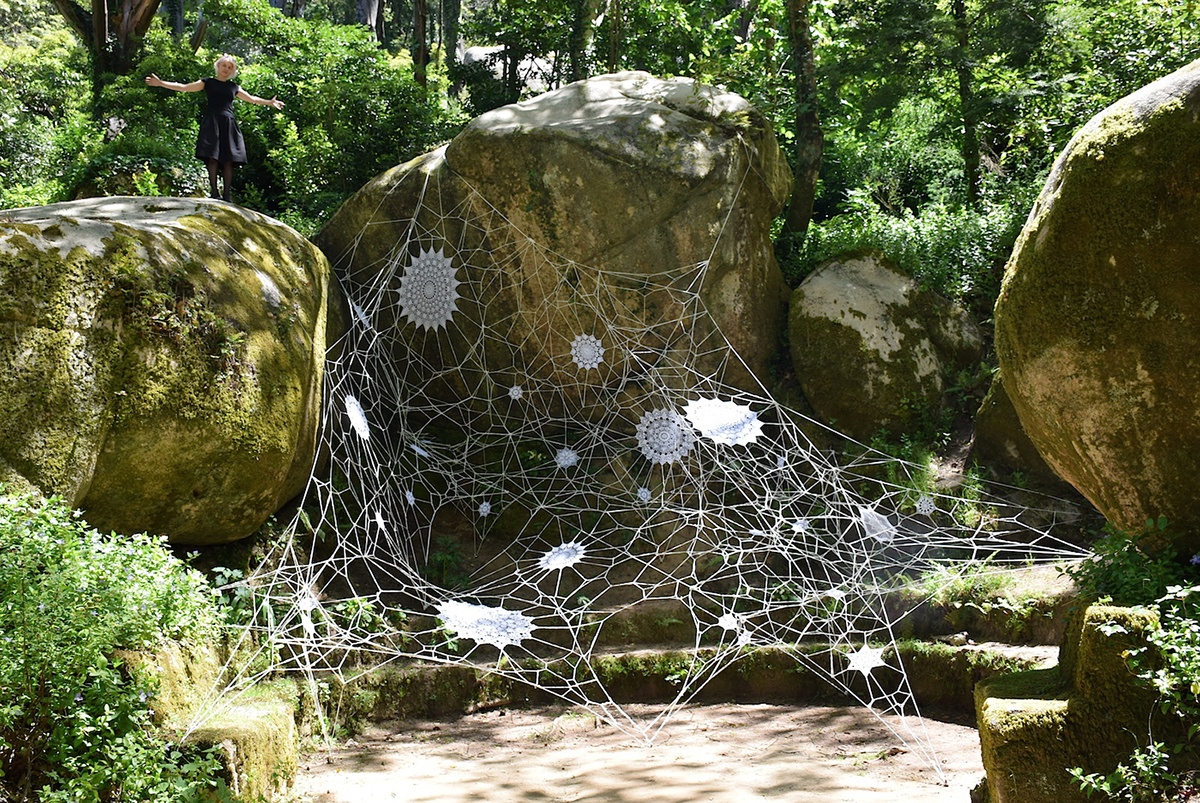NeSpoon, the Polish artist creates street art (and more), using lace work and stencils, that’s not only beautiful, but intriguing and intense at the same time. Cracks on the side walks, walls, usually become her canvas. With her art, which has positive emotions and stories, NeSpoon desires to make a positive impact in human lives. The local context, culture and surroundings matter most, and help NeSpoon create a harmonious art. Involvement of folk artists in her work, ensure that local people connect with the art.

Below is some of her work:
Sajid’s house, below
*Mr. Sajid is homeless man, who lives on the beach in the Sinai. He earns by fishing and selling fish to local Bedouins. – LeSpoon*
The Big Picture, Below:
*Imagine an ant walking on a doily. The ant doesn’t know on how beautiful pattern she’s running. What she sees in front of her are just entangled threads. She follows the particular thread but doesn’t know where it leads.To see the beauty of the lace pattern, the ant would have to change the point of view, look at the pattern from distance. Only then her eyes would see the big picture. – LeSpoon*



Her art is not restricted to walls, tree trunks, utility boxes, a stone, or a brick, she brings almost anything and everything to life with her art. Below:
Mural and Light:
More work by NeSpoon:
All photographs, courtesy: NeSpoon. Follow NeSpoon on Behance.






















